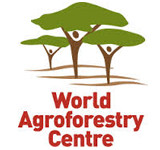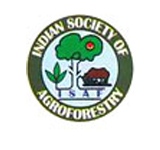
Vigyan Bhavan & Kempinski Ambience
10 - 14 February 2014
Delhi, India
blog

100 year-old Caragana hedge; trees break the speed of fast-moving air. Photo by Doug Viste via Flikr.
In temperate regions, agricultural practices integrating leguminous trees and food or forage crops can sharply reduce overdependence on chemical fertilizers, and improve yields. Tree boundaries also shield pastures against fast-moving winds.
Discussing his findings at the ongoing World Congress on Agroforestry, Anthony Kimaro, a researcher with the World Agroforestry Centre, shared evidence where sufficient nitrogen was transferred from a Caragana tree (Siberian peashrub) shelterbelt in Canada to forage crops, thus replacing the use of fertilizers.
“It is important to note that the overuse of synthetic nitrogen fertilizer to meet the requirements of food and forage crops species contributes to environmental problems such as nitrate leaching to groundwater and enhanced greenhouse effects through N2O emissions,” Kimaro told a session at the Congress.
During the study, Kimaro with co-researchers planted fodder crops near a caragana shelterbelt to determine the amount of nitrogen transferred from the trees to crops.
The scientists later found out that plants close to the shelterbelt row received significantly higher percentage of nitrogen compared to those further away. “The nitrogen received was within the optimum application rates for these crops, meaning there was no longer any need to apply nitrogen based fertilizers,” he said.
According to Shibu Jose of University of Missouri Columbia, this is one of the sustainable solutions agroforestry can offer to existing global challenges.
According to Jose, other challenges that can be solved by agroforestry include food security, energy, water scarcity, greenhouse gases, loss of biodiversity, diseases and invasiveness.
“Agroforestry is the way to ‘bullet proof’ farms in the face of climate change,” he said.
A different study done in Chile by Alvaro Sotomayor, from Sede Biobío, Instituto Forestal, Concepcion, Chile, found that apart from fixing nitrogen into other crops, the trees reduced the velocity of wind, which is a disturbing factor in the Aysen temperate region of the country.
“The results obtained show that the trees managed under silvopastoral systems modified some ambient climatic parameters. The main parameter that was modified by the trees was average wind speed,” he told the session on Temperate Agroforestry at the Congress.
Sotomayor’s study evaluated the effect of Pinus contorta plantation, managed under two designed silvopastoral systems, in altering climatic parameters such as wind speed, wind chill, relative humidity, ambient temperature and precipitation that reached the ground, and its effect on livestock and prairie production.
By Isaiah Esipisu
—
Follow the Congress on Twitter #WCA2014 for live updates!





